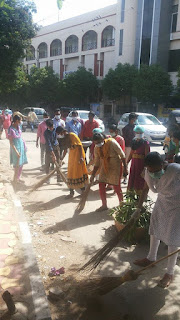Delhi Pollution Levels Soar, Centre Summons 5 Northern States
New Delhi: After a nearly 21-fold increase in pollution levels here on Diwali, the Centre summoned governments of Punjab, Delhi, Haryana, Rajasthan and Uttar Pradesh over enforcing ban on stubble burning.
The decision comes on a day the Central Pollution Control Board released its report on air quality of Delhi. As per the report, PM 2.5 levels on the day of Diwali (October 30) across each of the 11 pollution monitoring centres were anywhere between a staggering 4 times to 21 times of what they were the week before (October 24). For example, as compared to the previous week, Pitampura recorded 20.63 times higher PM 2.5 levels, while Parivesh Bhavan Centre in East Delhi recorded 11.4 times higher PM 2.5 levels.
The permissible limit for PM 2.5 is 60 micrograms per cubic metre. Pitampura in North Delhi recorded the maximum at 1,238 micrograms per cubic metre on Diwali.
At Janakpuri, PM 2.5 levels were 8.7 times higher and at ITO, PM 2.5 levels were 7.6 times higher.
Similarly, on the day of Diwali PM 10 levels were 1.5-4 times higher as compared to the previous week. For example, PM 10 levels at ITO on Diwali were 4.3 times higher than what they were a week ago.
On this Diwali, as compared to last year, PM 2.5 levels were 2-4.5 times higher and PM 10 levels were 1.5-3 times higher.
The Environment Ministry has attributed the spike in pollution levels to four main factors. "It has been observed that open burning of solid waste in and around Delhi, vehicular emissions in Delhi, dust by the roadside and around construction sites in Delhi and stubble burning of crop residue in neighbouring states of Delhi are major contributors to pollution in Delhi," according to a release by the Ministry.
Accordingly, five states -- Punjab, Harayna, Delhi, UP, Rajasthan -- have been summoned in order to ensure effectiveenforcement of the ban on stubble burning. "The Ministry of Environment, Forest and Climate Change has summoned the concerned secretaries on 4th November to review the situation and to further deliberate on the strategy to minimise occurrences of open burning in agriculture fields," according to the press statement.
It has also been decided that CPCB will direct local bodies in and around Delhi to check open burning of solid waste and strictly enforce rules related to prevention of gaseous emission from construction activities.
CPCB will also instruct public road owning agencies in Delhi to ensure that roadsides are watered periodically suspension of dust.
Delhi Police, too, will be required to streamline movement of traffic at busy intersections so that pollution due to vehicular emissions is minimised.


















